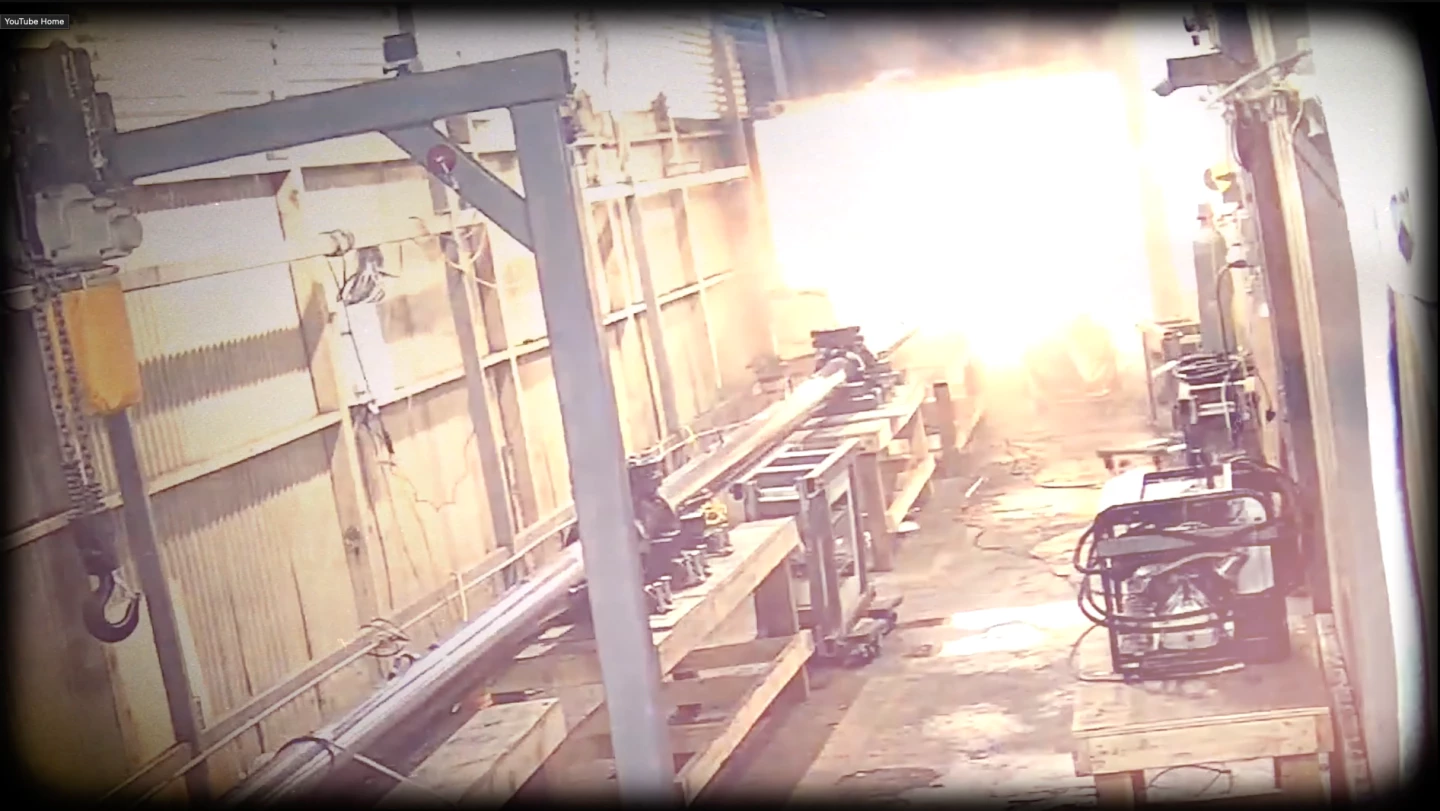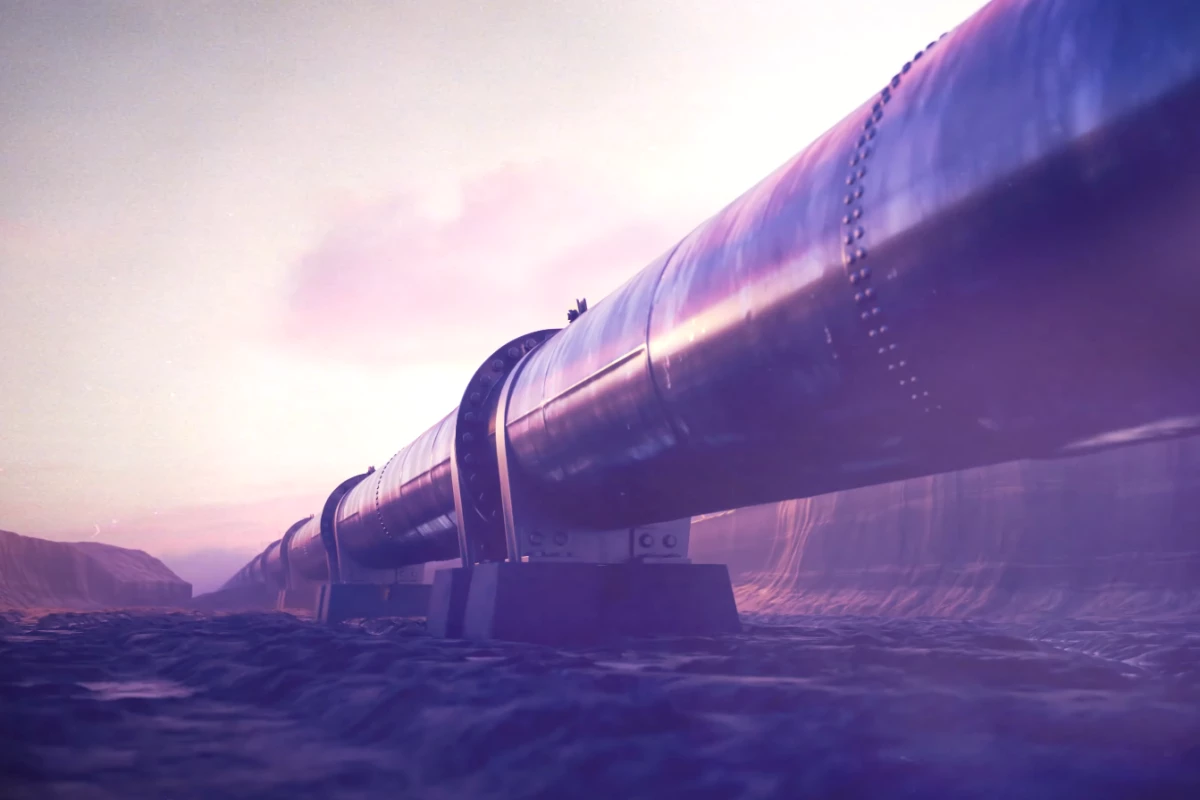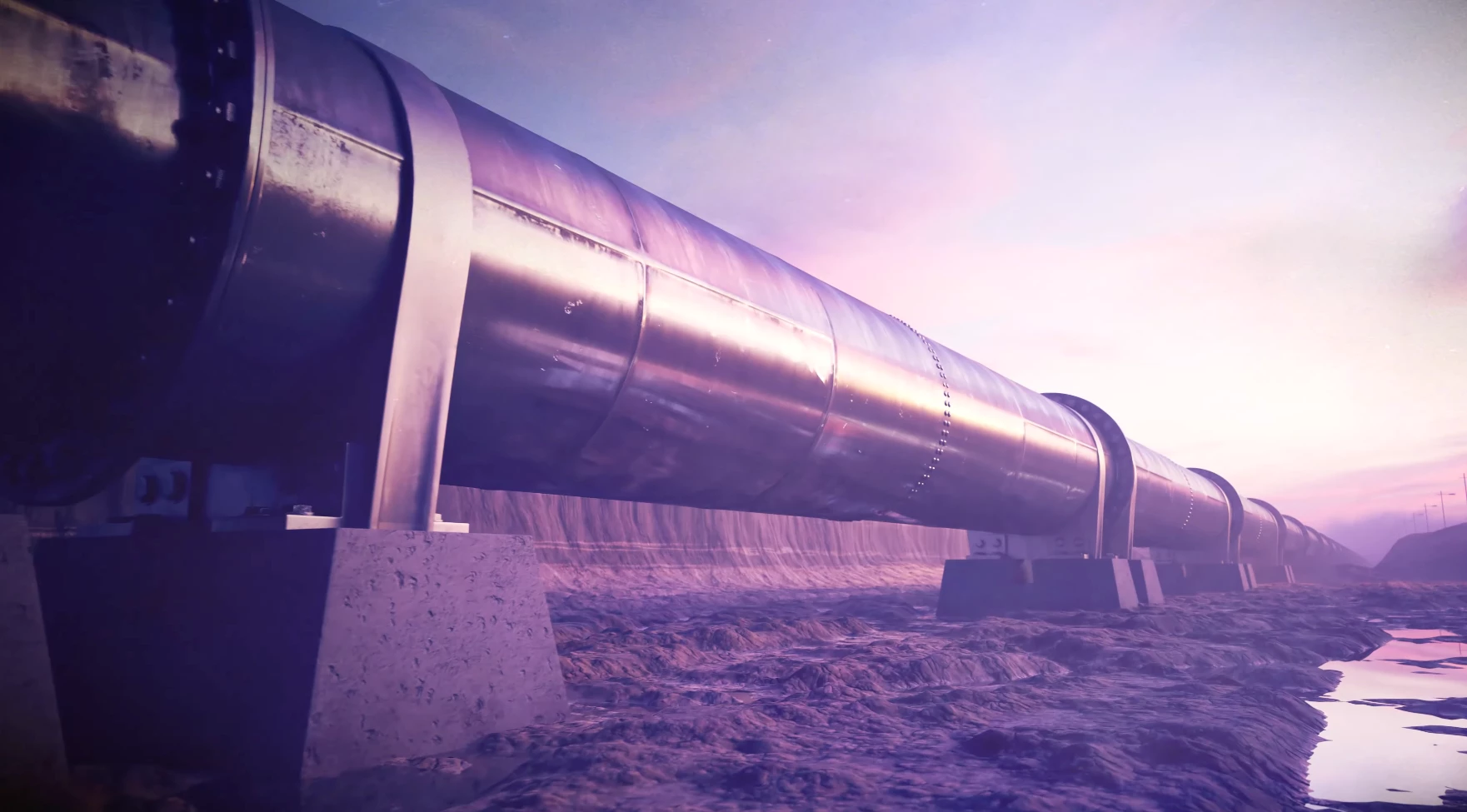Rockets are expensive, so a number of kinetic launch startups are working on ways to simply yeet payloads into orbit and bring costs down. This one's very fun – a six-mile long concrete cannon that'll squeeze launch vehicles to Mach 30 in one second.
Why are we launching small satellites into space on rockets? Longshot CEO Mike Grace has a theory: rockets are super-handy weapons of war – easy to manufacture, easy to hide and move around in the sleight-of-hand of international warfare.
Defense budgets paid for rocket development, but let other – potentially much cheaper – orbital launch technologies wither on the vine. The missile business put man on the Moon. Grace explains in more detail in a very entertaining and downright confrontational presentation made last month at the Foresight Institute's 2023 Space Workshop.
And might I add, any conference speaker that leads off with "OK listen up, assholes" is welcome to my full attention. Check it out:
Grace isn't there to take a flying dump on rockets recreationally; his company is working on an alternative, much more violent approach to orbital launch. Where fellow kinetic launch startup SpinLaunch is already testing its ability to spin a launch vehicle up to insane RPMs inside a centrifugal chamber and literally fling it skyward, Longshot wants to get the job done with a massive, multi-stage pneumatic cannon.
A cannon developed on multi-stage projectile-accelerating ideas from the 1800s. If you want to radically increase the range and muzzle velocity of a cannon, you run into a problem: there's only so much explosive force the barrel itself can take, and there's only so much that gas can expand before it stops giving your projectile a useful push.
Multi-stage "accelerating guns" attempt to solve this by starting with a relatively small bang to get the thing moving without destroying the gun itself, then supplementing this with additional bangs as it goes down the barrel, each precisely timed in an effort to give it an extra push as it passes.

Hitler's multi-stage accelerating super-cannon
It's a concept probably best known for its use in the V-3 cannon, or "Busy Lizzie," that Nazi Germany began rolling out toward the end of World War 2. The plan was to dig batteries of 150-m (492-ft) tunnels into the sides of rocky hills in the Western part of German-occupied France, and turn each tunnel into a multi-stage cannon using a series of accelerating charges provided by solid-fuel rocket boosters.
As you can imagine, you can't exactly aim something like that, so these guns were to be permanently trained on London, 165 km (103 miles) away across the English Channel, where they'd rain down regular 140-kg (310-lb) explosive shells that would arrive without warning or tell-tale bomber squadrons overhead, like a bigger, longer-range version of the "Paris Guns" Germany used to similar effect during World War 1.
Luckily for London, it didn't go down that way. After a series of disappointing and sometimes catastrophic tests, the entire site was leveled by the UK RAF's famous "Dambusters" bomber squadron and a series of 5,400-kg (11,900-lb) "Tallboy" deep penetration "earthquake" bombs. A smaller version of the V-3 did however manage to fire some 183 smaller explosive rounds over a distance of 43 km (26 miles) from Germany toward Luxembourg, killing 10 and wounding 35 before being dismantled when it was clear the site was about to be overrun by US troops.
So yes, long, multi-stage cannons proved pretty ineffective in warfare. Too big to move, hide or even aim, they were sitting ducks – not to mention, the Germans found it difficult to control the timing of the charges, and they never managed to fire the thing further than 93 km (58 miles) before the most promising example blew up during testing.
Graham Bull and Project HARP
But that doesn't mean the basic idea of an accelerating gun won't work for non-military purposes, argues Grace. Indeed, he points out, as far as cheap orbital launches are concerned, the idea of replacing rockets with big frickin' cannons was already proven in the mid-1960s by Gerald Bull's Project HARP.
"That is two WW2 battleship guns stuck end-to-end with baling wire," effused Grace, pointing at a photo of one of Project HARP's 16-inch, 119 ft (36.25 m) guns. "And this sonofabitch was putting 300-kilogram projectiles over 350 kilometers altitude. And he had plans for a multi-stage rocket system that would've been able to put a Cubesat – which wasn't an idea at the time – into orbit. But it wasn't a cube, it was a puck. And people were like, 'so, how many vacuum tubes can you fit in your puck?' It was 1963! What the hell are we gonna do with that?"
Project HARP was defunded by the Canadian government, and Bull was assassinated in 1990, shot five times in the head by Mossad agents, deemed a security risk to Israel after he took the HARP concept to Saddam Hussein and started developing a version nearly five times bigger, that'd fire rocket-assisted shells nearly all the way from Baghdad to New York City, or launch 1,200-pound (540-kg) satellites into orbit.

And so to Longshot
Apologies for the tangents here, but this has made some fun reading for me. So what exactly is Longshot proposing?
"At a high level, Longshot is a pneumatic-powered projectile cannon," said CTO Nato Saichek. "There's no combustion anywhere... The key insight, and the fundamental thing that makes Longshot work, is that instead of pushing from behind, we can also push from the sides. Our projectile has a long, tapered tail that hangs off the back, and we squeeze the tail from the sides, the same way you'd squeeze toothpaste out of a tube."
"By taking advantage of the geometry of that tail, we can push the projectile forward much faster than the gas moving in from the sides," added Grace. "This lets us take a comparatively slow-moving fluid – like compressed air – and turn it into a forward top speed of the projectile that's at orbital velocities."
The gentler approach offered by this compressed-air squeeze-gun method offers some advantages; it should be a lot easier on the barrel than the explosive or rocket-powered efforts of yesteryear. And the gun can quickly and easily be "re-loaded" by compressor pumps along the length of the barrel. Still, the numbers involved when it comes to space launches are awe-inspiring.

"I'll give you the image I have of an orbital launch from Longshot," said Saichek. "So we have something like a 10-kilometer-long concrete cylinder that's something like 10 feet in diameter. And we load the projectile into the breech, and seal it up, and we fire. In about one second, the projectile goes from one end of the barrel to the other. It exits going about 10 kilometers per second (Mach 29). The projectile banks up off of the atmosphere, and rides screaming up into the upper stratosphere. A little delivery to low Earth orbit. And then we'll do it again. And we'll do it again."
But as huge as it is, there's nothing particularly space-age about the barrel itself. "It's made outta the same stuff you'd build an overpass out of. It's mild steel and concrete. So the system we're building – that sits on the ground and does all this work and results in an aerospace result – is really a piece of civil infrastructure."
Still, 10 km' worth of just about anything is still a pretty pricey proposition, so Longshot has found itself an early market it can address to generate cashflow during the prototyping phase: hypersonic vehicle testing. The team has built a small-scale prototype that's already exceeded Mach 2.2 in muzzle velocity, and once it reaches Mach 5, the company will be able to start selling its services to the emerging hypersonic aircraft industry.

Obviously, Longshot won't be used to launch humans into space; accelerating from zero to Mach 30 in one second sounds like a great way to turn a man into a viscous stain. But we've got rockets for pushing soft, meaty things – what we don't have is a really cheap way to get less-perishable stuff past the clutches of gravity in the sort of quantities we'll need for more involved orbital and Moon-based constructions.
Even though OpenAI's Sam Altman is already on board with pre-seed funding, plenty of challenges lie ahead. Where to put these six-mile-long hyper-cannons, for one, since every launch will be accompanied by an Earth-shattering and rather antisocial hypersonic boom. Even sticking these things in the desert might deafen entire ecosystems.
Then there's how to make sure the concrete tunnel doesn't get chewed out by the forces involved. And how to design launch vehicles capable of withstanding not only the massive acceleration forces involved, but the brutal ablative effects you get when you try to push things through the atmosphere at 30 times the speed of sound. On the latter point, Grace says size is the key.

"It's a question of ballistic coefficient," he told an audience member at the Foresight presentation, in a rapid-fire masterclass of condescending sing-song tone that brings to mind a turbocharged version of the Comic Book guy from The Simpsons. "If you try to go small, your surface area to volume ratio sucks, and the fraction of the vehicle that must be ablative material is very high, potentially exceeding 100%."
Big ones, on the other hand, can carry lots of ablative shielding and still have it be a small fraction of the total launch vehicle weight, allowing lots of space for a second-stage rocket to position the vehicle in orbit, and of course for lots of payload.
Will this project work, or is Longshot a long shot? Lord knows. But at the very least, it's a hell of an entertaining idea, and one we look forward to following, if for no other reason than to have an excuse to watch lots more Mike Grace presentations. Sadly, he's a tad more measured and less sweary in the promotional video below.
Source: Longshot











